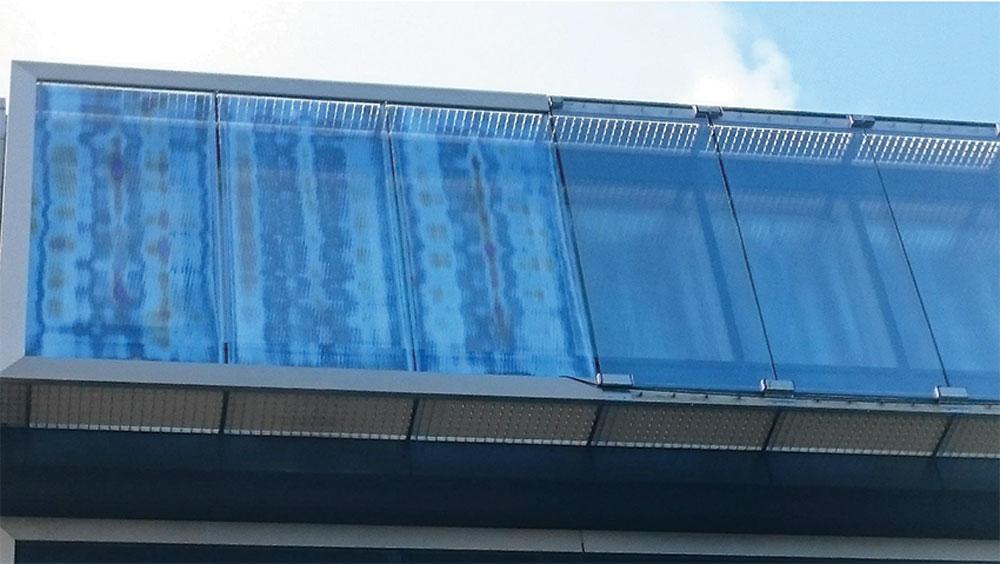Anisotropy in the context of tempered glass refers to the variability in the optical and physical properties of the glass due to differences in the internal structure of the material. These differences result from the residual stress introduced during the tempering process.
Causes of Anisotropy in Tempered Glass
The tempering process involves heating the glass to an elevated temperature and then rapidly cooling it with air. This rapid cooling creates residual stresses in the glass: the outer surfaces cool faster and become compressed, while the interior cools more slowly and remains in tension.
This difference in internal stresses creates variations in the optical properties of the glass, resulting in anisotropy.
Manifestations of Anisotropy
- Black Band Patterns: Anisotropy often manifests as black banding or spot patterns when tempered glass is viewed through polarized lenses or under certain polarized light conditions. This is due to the variation in the refractive index of the glass, caused by residual stresses.
- Optical Distortion: There may be visual distortions when looking through tempered glass, especially on large surfaces. These distortions are due to anisotropy in the optical properties of the glass.
Impact of Anisotropy
- Aesthetics: Black band patterns can be visually unsightly in architectural applications where appearance is crucial.
- Visual Quality: Distortions can affect the clarity and quality of vision through the glass.
- Physical Properties: Although anisotropy is primarily an optical phenomenon, it can also influence the physical properties of glass, such as fracture resistance and durability.
Measurement and Control
Anisotropy can be measured using specialized equipment such as polarimeters, which allow residual stresses in the glass to be visualized and quantified. Some measures to control anisotropy include:
- Optimization of the Tempering Process: Adjust the cooling process to minimize internal stresses.
- Material Quality: Use high quality and homogeneous glass.
- Inspection and Quality Control: Implement rigorous inspection and quality control methods to detect and correct anisotropy problems by analyzing and evaluating all glass with the Glass Inspector 4D
Conclusion
Anisotropy in tempered glass is a phenomenon caused by residual stresses introduced during the tempering process. It primarily manifests itself as variations in the optical properties of the glass, which can result in black band patterns and optical distortions. Although challenging, it can be mitigated and controlled through proper manufacturing and quality control techniques.
For more information, you can contact us at sales@glassinspector.com
